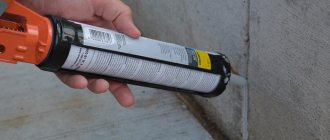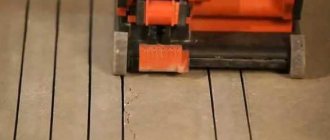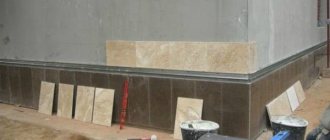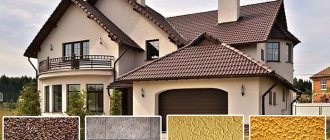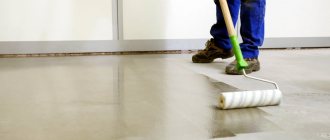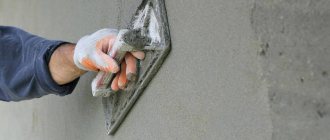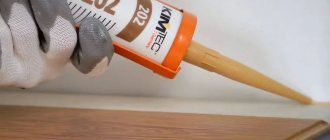External sealing of a structure is a very important task. It allows you to achieve excellent results, ranging from reducing heat loss in rooms to protecting against mold.
But it is worth considering that not all materials have a wide range of operating temperatures, and if this factor is not taken into account, compaction and sealing will not lead to the desired result. Frost-resistant and water-resistant sealant for exterior work, which can be easily found in hardware stores and on the market, helps correct the situation.
Requirements for sealants for external use
Such compositions have special requirements, which can be explained by the harsh operating conditions. The main thing is that they must be resistant to ultraviolet radiation. It has a very detrimental effect on various materials, as a result of which they lose their qualities and become deformed.
Severe frosts and seasonal temperature changes pose no less of a threat to buildings. This is why sealants with a wide temperature range should be used. It must be taken into account that in addition to resistance to frost and dampness, such compositions must also be insensitive to strong heat, not crack or dry out, maintaining high adhesion and elasticity.
Sealant for external use must retain its properties over a wide temperature range
There is one more requirement - durability. Since external sealing of joint seams is a labor-intensive and very expensive procedure, it is recommended to use materials designed for 15–20 years of service.
Bituminous
Compositions made from bitumen are perhaps the oldest insulating materials known to mankind. This roofing sealant is used to install and repair various damage to metal roofs and rolled roofing materials.
Modern sealants are made from purified bitumen resin and additional components. Despite their simple composition, such materials protect metal roofing elements well from corrosion and create an excellent barrier against the penetration of water and moisture. They are easy to use, do not require preliminary surface preparation before use, and cure quickly.
Using bitumen sealant, you can treat large areas in a very short time, waterproof foundations, drainage systems, etc.
In addition to the listed advantages, bitumen sealant has a number of other advantages, including the following:
- High adhesion to various roofing materials
- Frost resistance
- High elasticity
- UV resistance
- Prevents the formation of mold and mildew even in high humidity conditions
One of the disadvantages is the impossibility of coloring after application.
Peculiarities
Many people are interested in what advantages sealants have for external use and why they are so useful compared to conventional compounds. All thanks to the following characteristics:
- Good elasticity. A very important property, since it allows you to fill all the cracks and cracks and at the same time keep the sealant inside the cavity.
- High strength. This feature is necessary for those objects that are constantly exposed to external factors leading to shifts and displacement. For example, this could be either increased vibration or seismic activity.
- Resistance to sudden changes in external temperatures. This is one of the key properties of external sealants, since otherwise the seal will lose its properties.
- Excellent adhesion. These compounds adhere perfectly to different surfaces, not only rough, but also smooth, which greatly simplifies working with them.
Another important advantage is frost resistance. Such sealants are perfect for the harsh domestic climate, since they do not lose the properties listed above even at -35... -60 degrees Celsius (depending on the manufacturer).
It should be noted that modern sealants are excellent for sealing a wide variety of materials, including:
- brickwork,
- concrete blocks,
- wooden buildings.
Thanks to this, frost-resistant sealant is widely used in both large and low-rise construction.
Famous manufacturers
When choosing colored sealants based on silicone or acrylic, it is better to focus on well-known manufacturers. Popular companies receive good reviews and care about the quality and ease of use of their products. There are many companies that produce several types of sealants in different colors. The most famous representatives are Accent, Germent, Ramsauer, Ilbrook, Moment, Ceresit, Soudal, Titan, Macroflex.
Colored silicone
Titan is a leader in the production of building mixtures. The company produces silicone compounds in different colors for interior and exterior use. Titan produces professional compounds based on silicone, acrylic, bitumen, and polyurethane.
Ceresit is an equally well-known company in Russia, producing a number of different sealants in a variety of colors.
Soudal produces world-class colored seals. The company's products are harmless and are manufactured taking into account all ISO 9001 quality requirements. From Soudal you can see sealants, adhesives, and roofing insulators. Among all the products, we can highlight a universal neutral silicone composition for concrete, aluminum, PVC, acrylic.
Colored acrylic
The accent is a high-quality acrylic sealant with excellent insulating properties. There are 5 varieties of the product for different purposes. They help improve insulation, reduce heat loss, and secure door and window frames. For example, Accent 124 can be used for outdoor work. It has good adhesion to concrete, but is also used for stone, tiles, and bricks. Accent 128 is suitable for interior work, providing good thermal insulation.
Ilbrook - has a wide selection of shades. The sealant retains its color for a long time. Often used when working with glass, well suited for concrete and metal.
Each colored sealant is suitable for its own purposes. Before purchasing, you should consult with a specialist who will suggest the best color solution. You should also independently check the quality of the sealant and its color in a small area.
Colored silicone and acrylic sealants (2 videos)
Application of colored sealants (15 photos)
Types and benefits
Today you can find a variety of formulations on sale, and each of them has both advantages and disadvantages. Let us immediately note that the price segment of these products is very wide, so you can easily choose a product at an affordable price.
There are 5 main types of frost-resistant sealants that deserve attention. We will consider them further.
Silicone
One of the most common means. It is considered universal and is excellent for outdoor work when it is necessary to seal joint gaps.
Silicone sealants allow you to create an elastic seam that has:
- wide range of operating temperatures,
- resistance to moisture, water and dampness,
- excellent adhesion (except for porous materials, including plaster and concrete).
Some sealants of this type have an unpleasant sour odor, which is formed due to the release of acetic acid vapors during curing. However, neutral formulations can also be found on sale.
When choosing sealants of this type, keep in mind that they are not suitable for painting, and also do not support the restoration of the seam (if deformed, you will need to remove it and reapply the product).
Acrylic
These compositions are considered the most environmentally friendly because they do not contain harmful substances. Due to this, they are suitable for sealing private buildings. In addition, they are known for their good vapor permeability, which makes them different from other products.
Acrylic compounds are suitable for processing wooden structures. With their help, you can seal the joints between timber or logs, providing excellent insulation from negative environmental factors. Other advantages of acrylic sealants include:
- ease of use,
- versatility, since due to high adhesion these compounds adhere well to both smooth and porous surfaces, including stone, metal, concrete, glass and others,
- UV resistance,
- possibility of partial or complete restoration of the seam,
- fire safety.
These compounds are cheap and available. When purchasing, it is recommended to read the instructions on the packaging and make sure that the sealant is frost-resistant (there should be a corresponding mark).
Polyurethane
Although this type has only recently appeared on the market, its popularity is growing rapidly. In addition to good water-resistant properties and high elasticity, these sealants are known for their excellent frost resistance. They can withstand temperatures down to -60 degrees Celsius and keep the seam as tight and undamaged as possible.
Products of this type are characterized by slight shrinkage after polymerization. They are resistant to direct sunlight. They harden upon contact with atmospheric moisture. If we are talking about two-component sealants, then polymerization occurs due to the mixing of the substances included in the composition.
The service life of polyurethane products is also interesting. It reaches 20 years, and the seam does not require renewal (except for mechanical or any other damage). As for the scope of application, these compounds are suitable for sealing:
- foundation,
- roofing covering,
- interpanel seams,
- window and door openings.
Rubber
These sealants are known for their unusual composition, which, in addition to elastomers and oligomers, may include:
- bitumen,
- solvents,
- resins,
- various fibers.
Due to this, the consistency of these sealants is very similar to ordinary rubber. Rubber-based products are known for the strongest adhesion. They adhere perfectly to both wood and stone, making them suitable for a wide range of work.
These compounds can withstand temperatures down to -50 degrees Celsius and at the same time help protect materials from the formation of corrosive processes, thanks to which they have become very famous in the professional field. They are not afraid of either water or ultraviolet radiation, and after polymerization the sealing seam can be coated with paint. This type of sealant can be applied even to a damp surface without fear of reduced adhesion.
Bituminous
Bitumen sealant is intended mainly for roofing work. It allows you to eliminate damage to both rolled materials and corrugated sheets, while preventing moisture from entering the under-roof space.
The advantages of these compositions include:
- ease of application,
- good adhesion to metal surfaces,
- no need for preliminary preparation,
- fast curing.
Due to the listed properties, bitumen sealants are even suitable for waterproofing foundations and drainage systems. They are known for their high resistance to frost and prevent the formation of mold and the spread of fungi, which is especially important for residential buildings.
Purpose of expansion joints
Figure 1. Expansion joint
Since concrete is not a plastic material, it is capable of cracking during shrinkage, due to temperature changes, in case of contact with other structures of the structure. To prevent such a problem, deformation slots are made in the monolith, which are filled with concrete sealants.
Sutures are made for various purposes:
- Structural ones are required to separate zones filled with mortar at different times. It is not always possible to fill the entire space at one time, which is why the concrete dries unevenly and cracks in contact areas.
- Shrinkage agents are necessary to eliminate the process of shrinkage of the monolith after drying. Grooves are made in it or inserts are used when pouring the solution.
- Insulation is required to separate the concrete screed and other structures of the structure. Each material has individual operational parameters, so it is necessary to make insulation between them to prevent the surface from being exposed to excess pressure due to joining.
Scope of application
These funds are used to prepare the structure for the cold season. Although some of them can be used in humid environments, it is recommended to use them in dry weather to achieve excellent results.
Frost-resistant sealants are suitable for processing:
- residential apartment buildings,
- private low-rise cottages,
- shopping and business centers,
- warehouse premises,
- hangars,
- production workshops,
- communal facilities,
- engineering systems.
Most often they are used to seal interpanel seams and window openings, which helps prevent drafts. They are indispensable when carrying out roofing work or for waterproofing concrete structures. Given their good adhesion, frost-resistant sealants are suitable for buildings made of any materials.
With the help of these compounds, you can easily fill small voids, and the seam will help not only seal them, but also tighten the edges, preventing further deformation. These products are even used in the agricultural industry, as they help protect greenhouses from freezing during the cold season.
Roofing silicones
Silicone sealant is the most popular and versatile. However, their purpose is slightly different. Sometimes it is necessary that after application the joint is not only strong, but also flexible.
Due to their composition, silicone sealants react better with surfaces where a classic sealant would not be sufficient.
- Roofing silicone should not be acidic, as this will accelerate corrosion of roof structural elements.
- Therefore, it is best to rely on natural silicones, which have the best reviews.
- The fact is that roofing silicone is not easy to paint (like acrylic or rubber).
- Therefore, try to immediately choose a suitable color, and do not choose, for example, colorless.
Of course, roofing silicones are not always the best solution - you can choose acrylic, bitumen or putty.
Everything will depend on the type of work being performed or the requirements that the seam must meet.
Application technology
As for the method of use, it is very simple and known to everyone who has worked with sealants at least once and knows their features. For this, a special gun is used (mechanical, pneumatic, electric, etc.).
The sealant must be squeezed out evenly, making sure that the seam is not too thin and not too thick. To fill a gap, you need to place the nozzle of the nozzle into its cavity and then squeeze out the sealant, running along the entire length of the hole.
You need to work with these compounds without delay, since polymerization of some of them occurs quite quickly. It is not recommended to straighten the seam with your hands, since the sealant will stick to the skin and can be quite difficult to remove.
Consumption
Now let's talk about how much sealant is needed to carry out certain work. About 6 mm of product is required per meter of seam, but it must be taken into account that this is an average figure. Actual consumption depends on a number of factors:
- depth and width of the gap,
- type of building materials, etc.
If you have to seal a large gap, then in order to save money, it is recommended to use a special silicone cord. It is first placed into the cavity and then completely sealed with sealant.
If you need to process a small surface, for example, a window opening, one 300 g tube will be enough, but you also need to take into account the width of the gap between the frame and the wall.
Table of sealant consumption relative to the depth and width of the seam
Tips and tricks
When working with frost-resistant sealant, use rubber gloves. If you have excess, you can remove it with an ordinary rag, and it is better to do this before the seam is completely polymerized. Old sealant can be removed with a sharp object: a stationery or construction knife.
It is not recommended to save on ingredients. Cheap sealants from little-known manufacturers, as a rule, either contain all kinds of additives, or do not have sufficient resistance to frost and atmospheric factors.
You can find products on sale not only from foreign, but also from Russian manufacturers. From a practical point of view, there is no difference between them, and the cost of imported products can be significantly higher. The main thing is to make sure that the sealant is frost and moisture resistant. If you encounter any difficulties, you can consult the seller.
What is included in low quality sealants?
Low-grade solutions contain vinegar essence and solvents. The disadvantage of such solvents is that they destroy lignin (a polymer of natural origin, a product of biosynthesis) and cellulose. It is cellulose and lignin that are responsible for the surface layer of wood and its strength.
After application and drying, wood sealant may peel off over time (craftsmen often find that the strips completely fall off the frame and the seams have to be re-sealed).
Solvent and vinegar essence are often found not only in silicone pastes, but also in other sealants. The safest option is acrylic mixtures.
Hybrid and polyurethane materials are not cheap, but often do not live up to expectations.
But this does not mean that sealants at a low price are better - if you are offered a product at a reduced cost, this should alert you.
